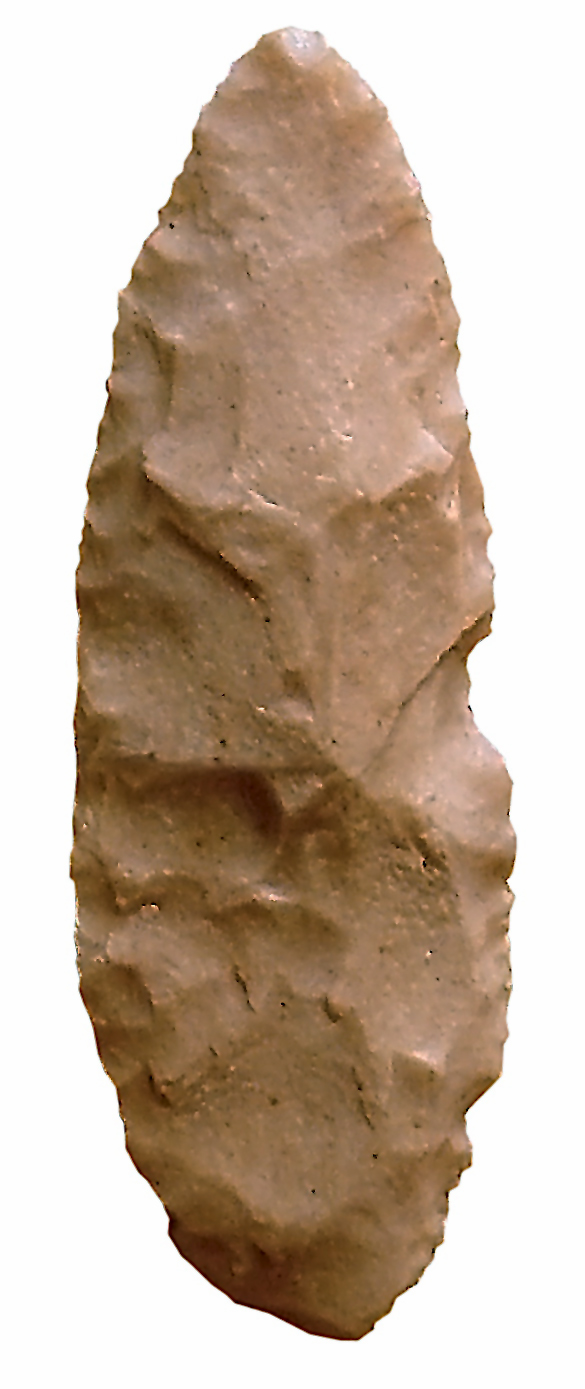|
Kirikongo
Kirikongo is an archaeological site located in the Mouhoun Bend region of Burkina Faso. The importance of Kirikongo and investigations of other sites in the Mouhoun River drainage system is that the system remains relatively unexplored and was inhabited by the ancestors of the Bwa.Holl, A. F. C. and L. Kote 2000 Settlement Patterns, Food Production, and Craft Specialization in the Mouhoun Bend (NW Burkina Faso): Preliminary Results of the MOBAP 1997-1999 Field Seasons. ''West African Journal of Archaeology'' 30(1):69-107. Additionally, the area represents a zone of punctuated assimilation and adoption of animal husbandry and agriculture during the occupations at Kirikongo.Dueppen, Stephen A. and Daphne E. Gallagher 2013 Adopting agriculture in the West African savanna: Exploring socio-economic choices in first millennium CE southeastern Burkina Faso. ''Journal of Archaeological Science'' 32:433-448. The site consists of several mounds that each represented a household.Dueppen, Ste ... [...More Info...] [...Related Items...] OR: [Wikipedia] [Google] [Baidu] |
Kintampo Complex
Kintampo complex is the period in prehistory that saw the transition to sedentism in West Africa, specifically in the Bono East region of Ghana and parts of eastern Côte d'Ivoire that began sometime between 2500-1400 BCE. Besides being a classic example of early forest dwellers in West Africa, Kintampo is significant because there is evidence of a drastic change in food production techniques due to the transition from nomadic hunter-gather lifestyles to life in stationary settlements. This change is known as sedentism and is typical of societies who have access to, or are developing systems of agriculture. Ceramic sculptures of humans and animals indicate that the Kintampo settlements were inhabited by practitioners of both pastoralism and horticulture. Another notable aspect of the Kintampo complex is the creation of art and items of personal adornment. Archaeologists have found polished stone beads, bracelets and figurines in addition to typical stone tools and structures such ... [...More Info...] [...Related Items...] OR: [Wikipedia] [Google] [Baidu] |
Archaeological Site
An archaeological site is a place (or group of physical sites) in which evidence of past activity is preserved (either prehistoric or historic or contemporary), and which has been, or may be, investigated using the discipline of archaeology and represents a part of the archaeological record. Sites may range from those with few or no remains visible above ground, to buildings and other structures still in use. Beyond this, the definition and geographical extent of a "site" can vary widely, depending on the period studied and the theoretical approach of the archaeologist. Geographical extent It is almost invariably difficult to delimit a site. It is sometimes taken to indicate a settlement of some sort although the archaeologist must also define the limits of human activity around the settlement. Any episode of deposition such as a hoard or burial can form a site as well. Development-led archaeology undertaken as cultural resources management has the disadvantage (or the ben ... [...More Info...] [...Related Items...] OR: [Wikipedia] [Google] [Baidu] |
Mouhoun Bend or Black Volta, a river flowing through Burkina Faso
{{geodis ...
Mouhoun may refer to: * Mouhoun Province, a province of Burkina Faso * Mouhoun River The Black Volta or Mouhoun is a river that flows through Burkina Faso for approximately 1,352 km (840 mi) to the White Volta in Dagbon, Ghana, the upper end of Lake Volta. The source of the Black Volta is in the Cascades Region of Burki ... [...More Info...] [...Related Items...] OR: [Wikipedia] [Google] [Baidu] |
Burkina Faso
Burkina Faso (, ; , ff, 𞤄𞤵𞤪𞤳𞤭𞤲𞤢 𞤊𞤢𞤧𞤮, italic=no) is a landlocked country in West Africa with an area of , bordered by Mali to the northwest, Niger to the northeast, Benin to the southeast, Togo and Ghana to the south, and the Ivory Coast to the southwest. It has a population of 20,321,378. Previously called Republic of Upper Volta (1958–1984), it was renamed Burkina Faso by President Thomas Sankara. Its citizens are known as ''Burkinabè'' ( ), and its capital and largest city is Ouagadougou. The largest ethnic group in Burkina Faso is the Mossi people, who settled the area in the 11th and 13th centuries. They established powerful kingdoms such as the Ouagadougou, Tenkodogo, and Yatenga. In 1896, it was colonized by the French as part of French West Africa; in 1958, Upper Volta became a self-governing colony within the French Community. In 1960, it gained full independence with Maurice Yaméogo as president. Throughout the decades post in ... [...More Info...] [...Related Items...] OR: [Wikipedia] [Google] [Baidu] |
Animal Husbandry
Animal husbandry is the branch of agriculture concerned with animals that are raised for meat, fibre, milk, or other products. It includes day-to-day care, selective breeding, and the raising of livestock. Husbandry has a long history, starting with the Neolithic Revolution when animals were first domesticated, from around 13,000 BC onwards, predating farming of the first crops. By the time of early civilisations such as ancient Egypt, cattle, sheep, goats, and pigs were being raised on farms. Major changes took place in the Columbian exchange, when Old World livestock were brought to the New World, and then in the British Agricultural Revolution of the 18th century, when livestock breeds like the Dishley Longhorn cattle and Lincoln Longwool sheep were rapidly improved by agriculturalists, such as Robert Bakewell, to yield more meat, milk, and wool. A wide range of other species, such as horse, water buffalo, llama, rabbit, and guinea pig, are used as livestock in some ... [...More Info...] [...Related Items...] OR: [Wikipedia] [Google] [Baidu] |
Holocene
The Holocene ( ) is the current geological epoch. It began approximately 11,650 cal years Before Present (), after the Last Glacial Period, which concluded with the Holocene glacial retreat. The Holocene and the preceding Pleistocene together form the Quaternary period. The Holocene has been identified with the current warm period, known as MIS 1. It is considered by some to be an interglacial period within the Pleistocene Epoch, called the Flandrian interglacial.Oxford University Press – Why Geography Matters: More Than Ever (book) – "Holocene Humanity" section https://books.google.com/books?id=7P0_sWIcBNsC The Holocene corresponds with the rapid proliferation, growth and impacts of the human species worldwide, including all of its written history, technological revolutions, development of major civilizations, and overall significant transition towards urban living in the present. The human impact on modern-era Earth and its ecosystems may be considered of global si ... [...More Info...] [...Related Items...] OR: [Wikipedia] [Google] [Baidu] |
Later Stone Age
The Later Stone Age (LSA) is a period in African prehistory that follows the Middle Stone Age. The Later Stone Age is associated with the advent of modern human behavior in Africa, although definitions of this concept and means of studying it are up for debate. The transition from the Middle Stone Age to the Late Stone Age is thought to have occurred first in eastern Africa between 50,000 and 39,000 years ago. It is also thought that Later Stone Age peoples and/or their technologies spread out of Africa over the next several thousand years. The terms "Early Stone Age", "Middle Stone Age" and "Later Stone Age" in the context of African archaeology are not to be confused with the terms Lower Paleolithic, Middle Paleolithic, and Upper Paleolithic. They were introduced in the 1920s, as it became clear that the existing chronological system of Upper, Middle, and Lower Paleolithic was not a suitable correlate to the prehistoric past in Africa. Some scholars, however, continue to view ... [...More Info...] [...Related Items...] OR: [Wikipedia] [Google] [Baidu] |
Iron Age
The Iron Age is the final epoch of the three-age division of the prehistory and protohistory of humanity. It was preceded by the Stone Age (Paleolithic, Mesolithic, Neolithic) and the Bronze Age (Chalcolithic). The concept has been mostly applied to Iron Age Europe and the Ancient Near East, but also, by analogy, to other parts of the Old World. The duration of the Iron Age varies depending on the region under consideration. It is defined by archaeological convention. The "Iron Age" begins locally when the production of iron or steel has advanced to the point where iron tools and weapons replace their bronze equivalents in common use. In the Ancient Near East, this transition took place in the wake of the Bronze Age collapse, in the 12th century BC. The technology soon spread throughout the Mediterranean Basin region and to South Asia (Iron Age in India) between the 12th and 11th century BC. Its further spread to Central Asia, Eastern Europe, and Central Europe is somewhat dela ... [...More Info...] [...Related Items...] OR: [Wikipedia] [Google] [Baidu] |
Bioarchaeology
The term bioarchaeology has been attributed to British archaeologist Grahame Clark who, in 1972, defined it as the study of animal and human bones from archaeological sites. Redefined in 1977 by Jane Buikstra, bioarchaeology in the United States now refers to the scientific study of human remains from archaeological sites, a discipline known in other countries as osteoarchaeology, osteology or palaeo-osteology. Compared to bioarchaeology, osteoarchaeology is the scientific study that solely focus on the human skeleton. The human skeleton is used to tell us about health, lifestyle, diet, mortality and physique of the past. Furthermore, palaeo-osteology is simple the study of ancient bones. In contrast, the term bioarchaeology is used in Europe to describe the study of all biological remains from archaeological sites. Although Clark used it to describe just human remains and animal remains (zoology/archaeozoology), increasingly modern archaeologists also include botanical remains (bot ... [...More Info...] [...Related Items...] OR: [Wikipedia] [Google] [Baidu] |
History Of Burkina Faso
The history of Burkina Faso includes the history of various kingdoms within the country, such as the Mossi kingdoms, as well as the later French colonisation of the territory and its independence as the Republic of Upper Volta in 1960. Ancient and medieval history Iron production occurred in regions near Douroula at least as far back as the 8th century BC and was widely practiced across the region by the 5th century BC. Furnaces, mines, and surrounding dwellings dating from this time period are found across the country. Recent archeological discoveries at Bura in southwest Niger and in adjacent southwest Burkina Faso have documented the existence of the iron-age Bura culture from the 3rd century to the 13th century. The Bura-Asinda system of settlements apparently covered the lower Niger River valley, including the Boura region of Burkina Faso. Further research is needed to understand the role this early civilization played in the ancient and medieval history of West Afric ... [...More Info...] [...Related Items...] OR: [Wikipedia] [Google] [Baidu] |
Bura Culture
The Bura culture (Bura system) refers to a set of archeological sites in the lower Niger River valley of Niger and Burkina Faso. More specifically, the Iron Age civilization exemplified by the Bura culture was centered in the southwest portion of modern-day Niger and in the southeast part of contemporary Burkina Faso (formerly known as Upper Volta). Iron industry, in both smelting and forging for tools and weapons, had developed in West Africa by 1200 BC. The first-millennium Bura-Asinda culture in the West African Sahel has been radiocarbon dated as starting in the 3rd century AD and lasting until the 13th century. But very little is precisely understood about this "shadowy" and "mysterious" civilization and its culture because it was discovered only a few decades ago in 1975; and it was not until 1983 that the first archeological excavation was commenced. Named for the Bura archeological site near Bura in southwest Niger, the Bura culture produced a variety of distincti ... [...More Info...] [...Related Items...] OR: [Wikipedia] [Google] [Baidu] |







